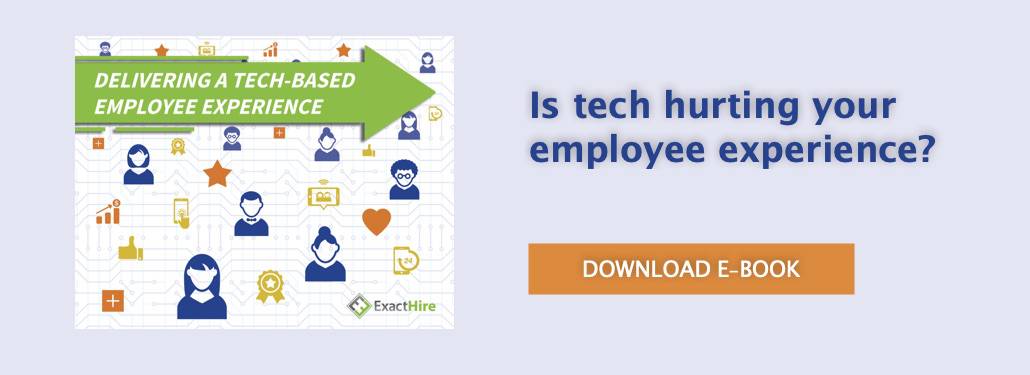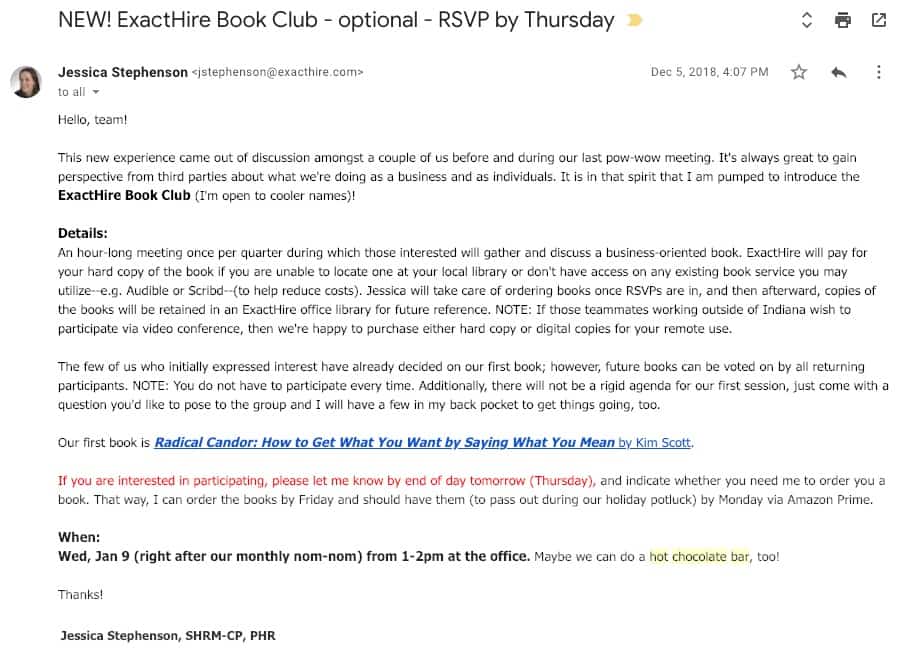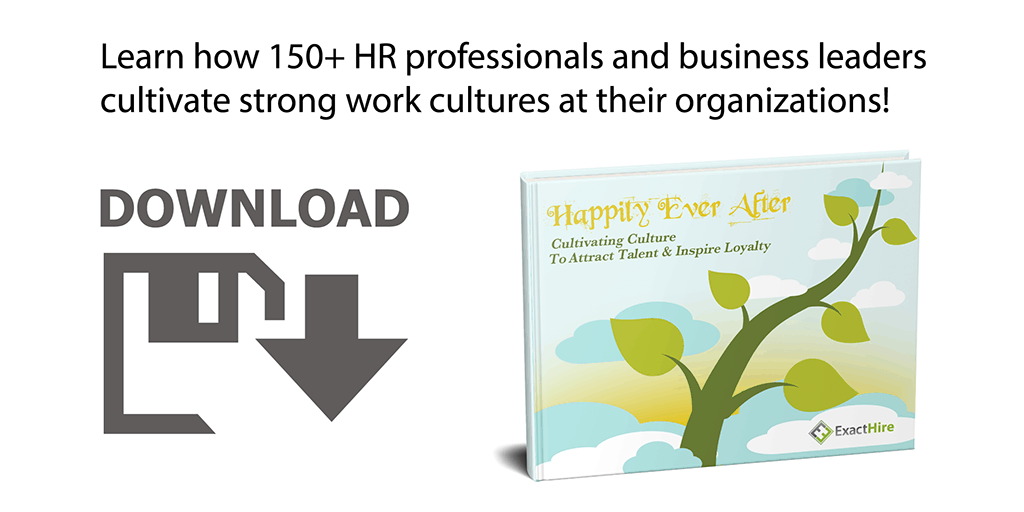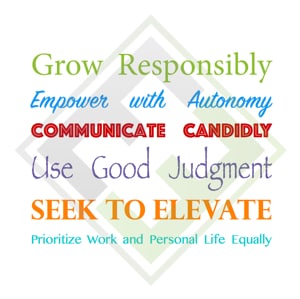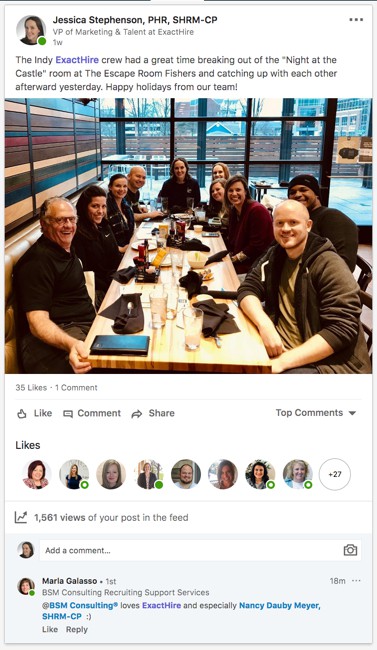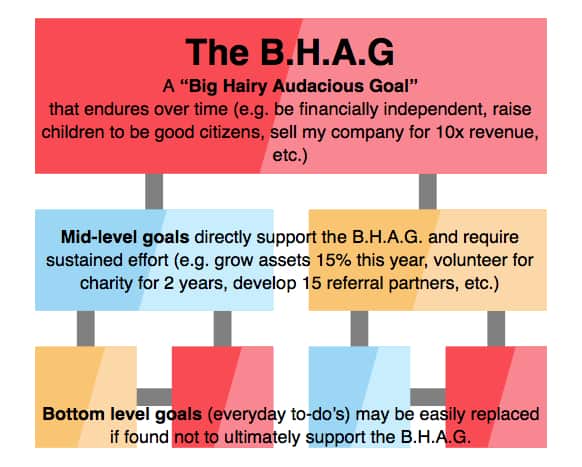Summer Employee Engagement Ideas
Summertime is the perfect time to hire new college graduates, utilize ExactHire’s ATS to find the best qualified candidates for your open positions!
Summertime and the livin’ is easy. Gershwin’s song from Porgy and Bess discusses the relaxation and peace that people seek in the summer, but finding tranquility is not always that easy. Productivity takes a hit during summer because of many reasons and employee engagement is paramount. Employee burnout is on the rise because there are a variety of outside events, activities and commitments that pull at the employee’s attention. Childcare can be a challenge. Summertime can be a way for organizations to motivate employees as well. Let’s talk about how summertime can lead to easy livin’!
Companies must first address summertime challenges. Summer can be a childcare challenge for families. Not all employees have family members able or willing to help with childcare in the summer. Registering kids for summer camps before they fill is often a game of chance and dexterity of clicking a keyboard and mouse. (Cue the jeopardy music in the background.) Sometimes, the employee/parent wins that game while other times, the panic of being waitlisted or it being closed takes over. There will be days that childcare arrangements fail due to illness or unforeseen emergencies. Give grace and allow flexibility to those employees with children.
To mitigate employee burnout, encourage employees to take vacation time. When an employee takes a break from work to focus on recreation, leisure or personal matters, it gives the employee time to focus on personal needs. When personal needs are fulfilled or resolved, distractions reduce.
Employees will spend the majority of summertime at work so here are a few activities to keep your onsite and virtual employees engaged and excited!
- Host meetings outside
Employees, onsite and virtual, can feel a longing to be outside more during the summertime. Pacify that longing by hosting meetings outside for onsite and virtual employees. Summer vacation schedules give management a chance to evaluate the necessity of meetings because it gets challenging to coordinate a time for all essential employees to attend the same meeting. This is a perfect opportunity to evaluate meeting efficiency and timeliness. If meetings can be streamlined to be more efficient with the use of agendas and pre-established, consistent times, the need for multiple meetings and the time length of meetings could potentially be reduced, opening more time for employees to enhance their productivity.
- Start a summer book club
Reading is fun-damental! To learn more professionally and personally, reading contributes. During summertime, people often take more time to read in the evenings or on vacation. Allow employees to select books of interest for discussion. For employees with reading challenges such as dyslexia, encourage them to join the discussion by listening to audiobooks. Ideas and collaboration through discussion can yield strategic growth within the company.
- Volunteer together!
Look closely in the community to find a social cause that needs support. Hospitals, adult and child care facilities, youth activities, and nonprofits are starting points for exploration. Sometimes, finding a volunteer opportunity can be within our own internal networks. Are there families that need some extra support? Any elderly or physically impaired individuals who need their grass mown? Document volunteer hours not because it is a competition, but so employees can take pride in how their time helps others. Check out VolunteerMatch for ideas. Many hands make light work! Having opportunities to volunteer with co-workers and get out into the community can greatly help with employee engagement in the summer months.
- Food truck fun!
Bring a variety of food trucks onsite for lunch options. There are a variety of diverse food options so host trucks that reflect unique cultural styles for employees to get a flavor for new cultural experiences. For virtual employees, include them by providing a gift card to lunch. Use video conferencing to make the meal more social.
- Get your sports on!
Get your on-the-clock team together off-the-clock by joining a sports league. There are summer league options for softball, volleyball, pickleball, or even gaming. Find sports of interest, and encourage employees to participate even if they feel their skills are sub-pro level. For those employees who do not want to play, encourage them to sit in the stands to cheer. Getting exercise does not have to occur off-the-clock. During the work day, set a time for employees to “take a hike”! Encourage onsite and virtual employees to walk outside for 15-30 minutes if conditions allow. For employees who have physical impairments that prevent walking, encourage them to get outside to get some vitamin D. Stepping away from work for a few minutes can recharge emotional batteries.
- Get your spectating on!
Not all employees want to break a sweat in front of their teammates but are willing to watch athletes compete. Many sports organizations will offer ticket discounts to companies. Look into options to watch local minor or major league baseball games, collegiate events, races or theatrical performances. Not only is a company supporting local teams by filling the stands, but it also promotes a sense of community among teammates when supporting others. Virtual employees can possibly watch the same event via streaming, local TV or cable services.
- Test your brain!
Host a trivia contest with your onsite and remote employees. Hold the event during lunch where the company can cater or do a pitch in. For remote employees, consider sending a gift card to cover lunch. Make this a weekly or monthly tradition. If company policy and local laws allow, offer prizes, such as company swag, to the winner(s) or winning team(s). Have an attendance prize to include everyone and generate excitement.
- Listen to the sound of music!
While many people love listening to the music of famous artists at concert venues, the price of some famous concerts might be outside of the company’s or employees’ budgets. That does not mean that concerts are out of consideration. There are many local venues that offer free or low cost outdoor concerts during evening or early afternoon hours. Take the team to listen. If permitted by the venue, live stream the event so virtual employees can experience the event.
- Stop and smell the roses
Get employees together to work in a community garden. Many areas offer community gardens where the food grown can be donated to local shelters. It is a way to learn more about growing plants while growing in spirit and keeping employees engaged during the summertime.
- Picnic time!
Host a picnic for the team. Cater the event or just the main course and make it an old fashioned pitch in. If there is not a courtyard or outside area on the company property, find a nearby park and have it there. Logistics can be cumbersome in urban settings so if an outdoor event is not conducive, transform the company’s dining area into a picnic theme. Finding picnic themed decor can be cost-friendly by visiting local dollar stores or ordering online at thematic sites. Online coupons reduce the cost. Keep the decor and make it a recurring event during summer.
No matter the activity, keep it light and fun! Requiring employees to participate dampens employee morale. For those who do not want to participate, do not penalize them. Some stellar employees simply want to do their job and go home. Solicit engagement ideas from employees and always include virtual employees when collecting ideas and feedback. Not all companies have a large amount of funds in their budget; money is not what generates employee engagement. When a company demonstrates authentic, genuine interest in the well-being of employees, that drives engagement and motivation. Finding ways to say a bonafide thank you for your effort will go a long way to strengthen the company team.


